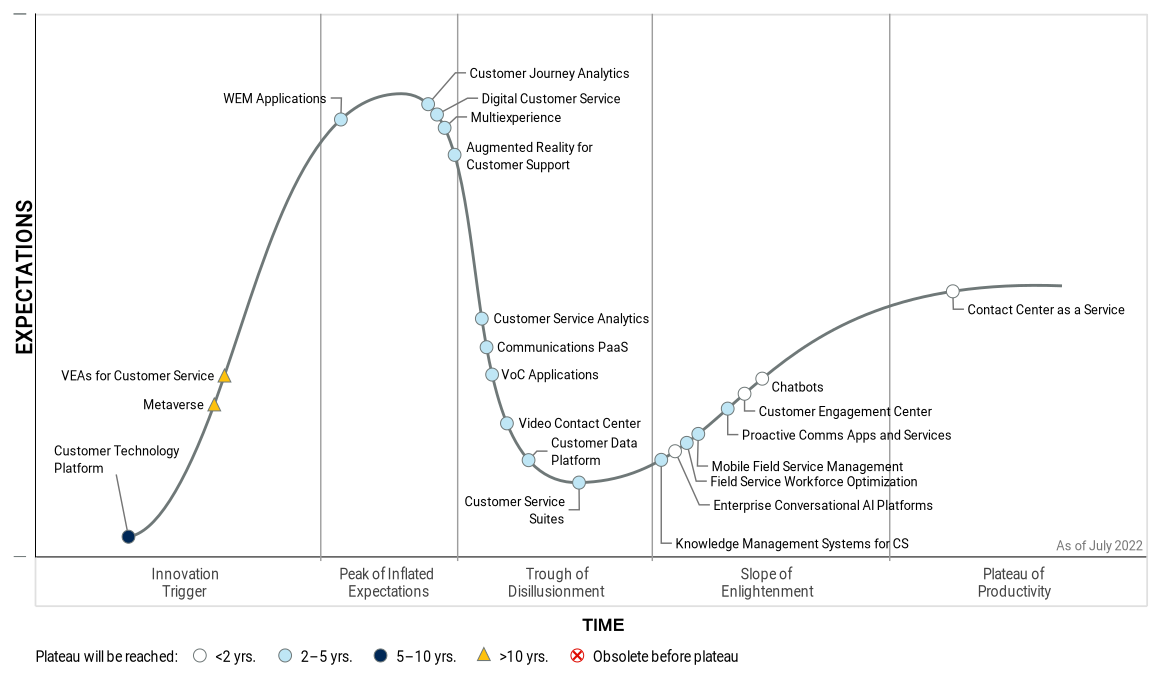The arrival of ChatGPT has taken the world by storm. With its ability to generate human-like text, ChatGPT is showing us how powerful AI technology has become. But just how mature is the technology, and what impact will it have on the future of work in the contact center industry? That’s what we’re going to explore in this blog post.
In 1995, Bill Gates announced the internet tidal wave, saying that the “development of the internet will set the course of our industry for a long time to come” and outlined a strategy for Microsoft to dominate it. 28 years later, Microsoft is once again at the forefront of groundbreaking technology.
Chat GPT is currently one of the fastest-growing consumer applications in history, having reached 100 million active users just two months after its launch. With a recent multi-billion dollar investment in OpenAI and plans to integrate ChatGPT into all its products, including Microsoft Teams, Microsoft is setting the tone for the future.
In a sentiment similar to that of Gates in 1995, Brad Smith, Vice Chair and President at Microsoft, recently said that “like no technology before it, these AI advances augment humanity’s ability to think, reason, learn and express ourselves. In effect, the industrial revolution is now coming to knowledge work. And knowledge work is fundamental to everything.”
Especially in the contact center industry, chatbots are nothing new. Since the early 2010s, bots built on rule-based automation and simple decision trees have been used in customer service. However, few were able to convince with a smooth customer journey. Now, ChatGPT has made a huge leap in natural language processing and is wowing us with its ease of use. The technology is particularly intriguing for contact centers because it makes it possible to automate customer service processes without compromising the customer experience.
The Gartner Hype Cycle is a useful tool to track the maturity of new emerging technologies. Philipp Beck, CEO of Luware, says: “Chatbots in the AI space are now at the tipping point towards the Plateau of Productivity. We have reached a point where the technology can be effectively implemented in contact centers to support agents.” And Gartner predicts that by 2027, chatbots will be the primary customer service channel for a quarter of organizations.

Gartner's Hype Cycle for customer service and support technologies; Source: Gartner (2022)
ChatGPT has been trained on a vast set of data. Smaller organizations will struggle to come up with the data quality and computing power needed to build a similar model for their business. Of course, you can use the OpenAI version, but then you have to be aware of privacy and security risks, as even Microsoft warned employees not to share sensitive data with ChatGPT as this could expose sensitive company information.
For smaller organizations, Microsoft’s investment in OpenAI opens up a more plausible path to using these technologies. Microsoft has already announced that it will integrate ChatGPT into Microsoft Teams Premium and that the integration will make it possible to use ChatGPT’s capabilities for intelligent meeting summaries, live translations, and recommended tasks, which has great potential to increase agent efficiency. Because Microsoft Teams has robust security measures in place, your data will remain protected.
Philipp Beck also outlines a path for leveraging this technology in the contact center space, stating that “contact center integrations for Microsoft Teams built on the Extend and Power model can easily leverage this technology in a secure way and use it to improve the agent and customer experience, for example by suggesting answers to agents. We are already working on the first showcases with MSFT, but the biggest challenge right now is to find the best model that also allows us to integrate internal information, such as from a knowledge base or CRM, so we can make the most of the technology in a contact center environment.”
AI chatbots like ChatGPT have many benefits but should be used with caution. One of the biggest problems with ChatGPT and other generative AI models is that they can produce so called hallucinations and confidently give false information (you can see a list of ChatGPTs failures here). ChatGPT uses probabilities to create a likely continuation of a text according to its data. This means that ChatGPT can make up false information and even create new words. That’s why human oversight and judgment are still important.
ChatGPT has great potential for automating simple tasks and building efficient workflows, but we will continue to rely on agents to make the most of it. Back in 1988, Hans Moravec noted that “it is comparatively easy to make computers exhibit adult level performance on intelligence tests or playing checkers, and difficult or impossible to give them the skills of a one-year-old when it comes to perception and mobility.” And when it comes to customer service, mental skills such as face recognition, tone recognition, and empathy are critical to building lasting relationships with your customers. You can’t replace agents with machines in customer service, but you can help them to work more efficiently.

24.02.2023